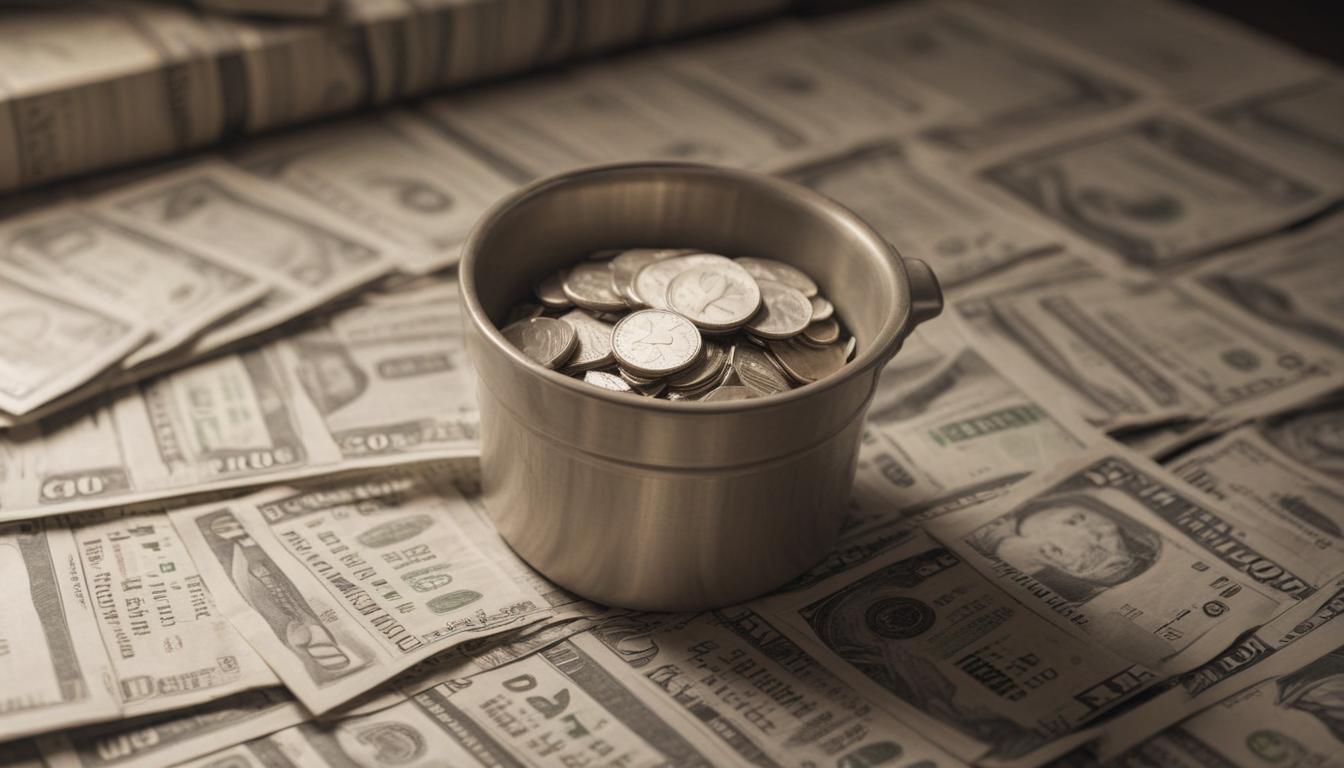Now Reading: Dividend Investing A Simple Income Guide
- 01
Dividend Investing A Simple Income Guide
Dividend Investing A Simple Income Guide

Understanding Dividends Income from Stocks
When you think about making money from stocks, what comes to mind? For many, it’s the stressful game of “buy low, sell high,” a constant cycle of tracking market fluctuations and hoping to time your trades perfectly. This approach can feel like a full-time job, filled with uncertainty and risk. It leaves many aspiring investors feeling overwhelmed, wondering if there’s a more stable, less demanding way to see a return on their investment.
But what if there was another way for your portfolio to generate money, a method where companies actually pay you just for being a shareholder? This isn’t a fantasy; it’s a core component of investing that has been creating wealth for generations. Welcome to the world of dividends. They represent a powerful path to earning passive income directly from the stocks you own, providing a steady stream of cash flow that can complement stock price growth and reduce your reliance on market timing.
What Exactly Is a Dividend
A dividend is a distribution of a portion of a company’s earnings, which is decided upon and managed by the company’s board of directors, to its shareholders. Think of it like this: when you own a share of a company, you are a part-owner. When that company does well and makes a profit, it can choose to reinvest all of that money back into the business for growth, or it can share some of those profits with its owners. That share of the profits paid out to you is the dividend.
Typically, it is the more mature, established companies that pay regular dividends. These are often businesses that have passed their phase of rapid, aggressive growth and now generate consistent, predictable cash flow. Instead of needing every dollar to fund new projects, they have enough surplus cash to reward their investors directly. For this reason, a consistent dividend payment is often seen as a sign of a company’s financial health and stability, making it attractive to investors who are looking for a reliable income source.
The Different Flavors of Dividends
Not all dividends are created equal, and they don’t always come in the form of cash deposited into your account. While cash is the most common type, companies have a few different ways they can reward their shareholders. Understanding these variations helps you better evaluate a company’s dividend policy and what it means for your investment portfolio. Each type has different implications for the company’s cash reserves and for your personal finances.
Cash Dividends
This is the most popular and straightforward type of dividend. When a company declares a cash dividend, it pays out a specific amount of money for each share of stock you own. For example, if a company announces a quarterly dividend of $0.50 per share and you own 100 shares, you will receive $50 in cash directly in your brokerage account on the payment date.
This is the form of dividend most associated with creating a passive income stream. Investors, particularly retirees, often rely on these regular cash payments to cover living expenses without having to sell their underlying stock holdings. It’s a tangible, spendable reward for your long-term investment in the company.
Stock Dividends
Instead of paying cash, a company might issue a stock dividend. This means you receive additional shares of the company’s stock. For example, a company might declare a 5% stock dividend, which means for every 100 shares you own, you will receive an additional 5 shares. While you don’t receive any cash, the total value of your investment theoretically remains the same at the moment it’s issued, as the new shares dilute the price of the existing ones.
Companies often use stock dividends when they want to reward shareholders but need to conserve cash for business operations or expansion. While it doesn’t provide immediate income, a stock dividend increases your ownership stake in the company. Over time, if the company continues to grow and pay cash dividends, your larger number of shares will entitle you to a larger cash payment in the future.

Key Dividend Dates You Must Know
Earning a dividend isn’t as simple as just owning the stock at any random time. There is a specific timeline of events with four crucial dates that every dividend investor needs to understand. Getting the timing wrong can mean the difference between receiving your payment and missing out completely for that period. These dates are set by the company’s board of directors and are publicly announced.
The four key dates are the Declaration Date, the Ex-Dividend Date, the Record Date, and the Payment Date. The declaration date is when the board announces the dividend. The record date is when the company checks its records to see who the official shareholders are. The payment date is when the dividend is actually paid. But the most important date for you, the investor, is the Ex-Dividend Date. To receive the dividend, you must own the stock before the ex-dividend date. If you buy the stock on or after the ex-dividend date, the previous owner gets the dividend. This date is typically set one business day before the record date.
Are Dividend Stocks Right for You
Deciding to focus on dividend-paying stocks is a strategic choice that depends entirely on your financial goals, risk tolerance, and investment timeline. For some, they are the bedrock of a stable, income-generating portfolio. For others, particularly younger investors with a long time horizon, they may seem less exciting than high-growth stocks that have the potential for explosive price appreciation.
The primary benefit is the creation of a reliable passive income stream. This cash can be used to pay bills or, even more powerfully, be reinvested to buy more shares, creating a compounding effect that can dramatically accelerate your wealth over time. Dividend stocks also tend to be less volatile than non-dividend payers, offering a smoother ride during turbulent market conditions. However, the main drawback is that dividends are not guaranteed; a company can reduce or eliminate its dividend at any time, especially during an economic downturn. Furthermore, money paid out as dividends is money that isn’t being reinvested for maximum growth, which can lead to slower stock price appreciation compared to innovative growth companies. Finally, in non-retirement accounts, dividends are typically subject to taxes, which can reduce your overall return.





































